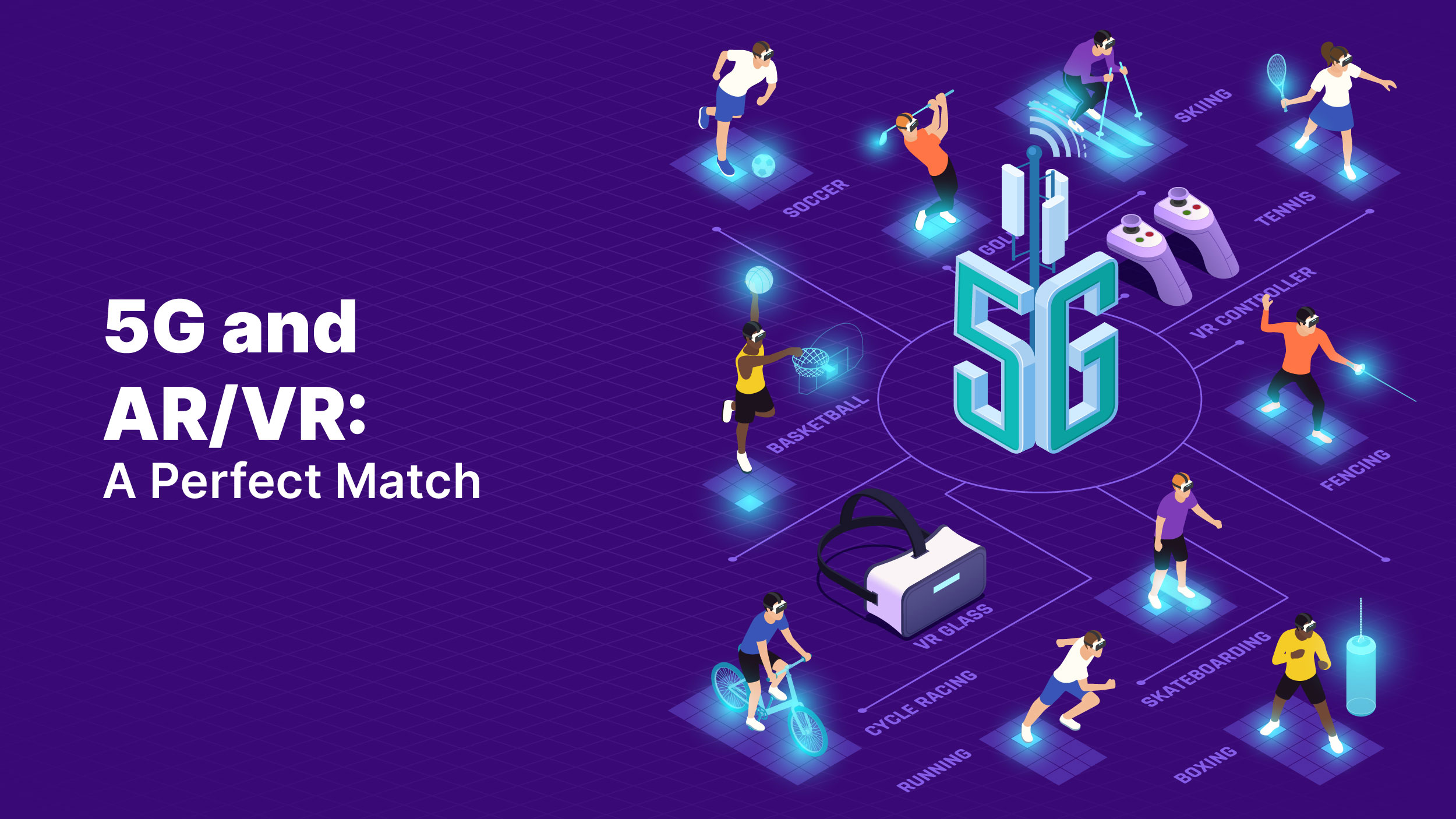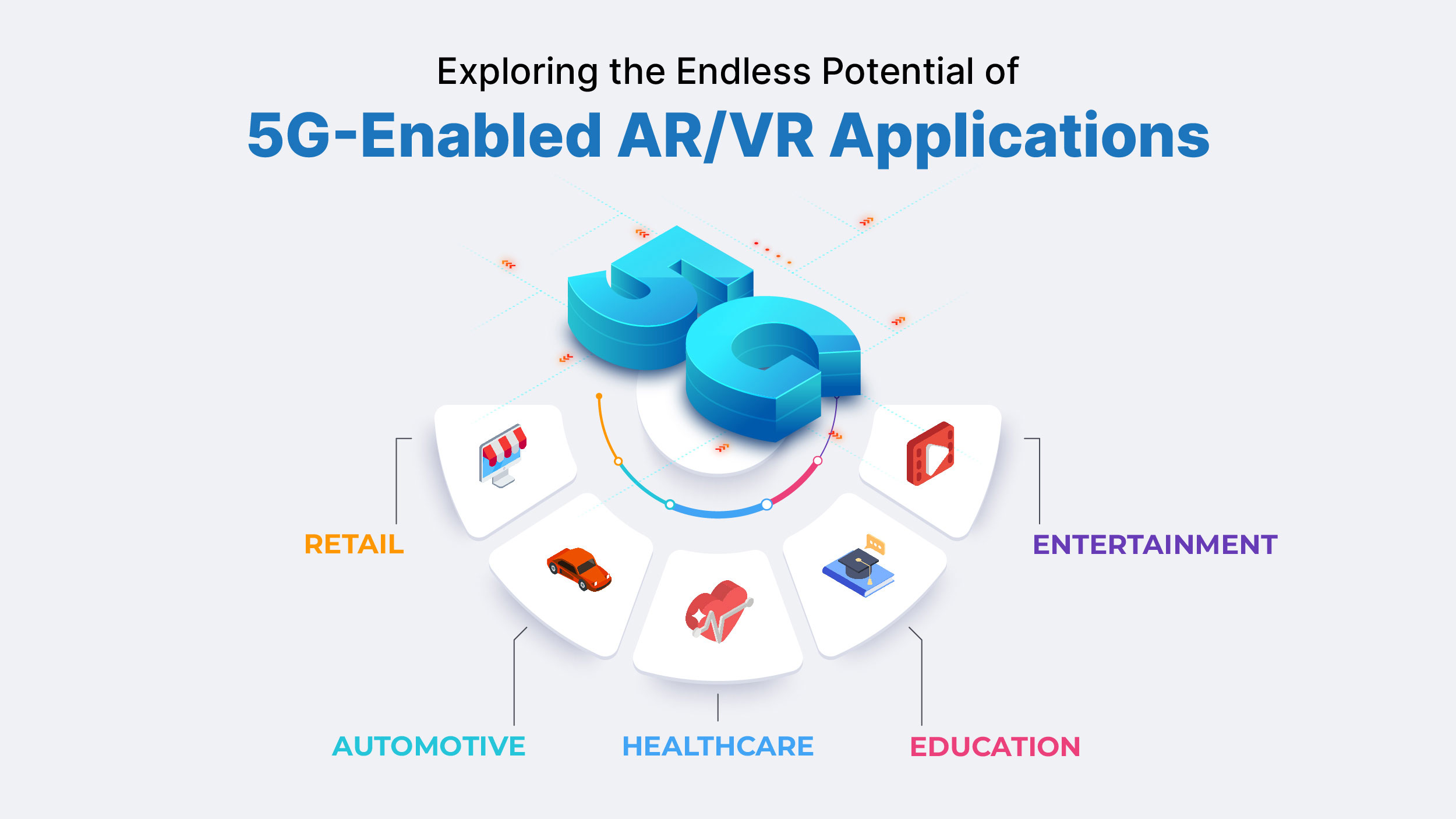5G technology is indeed a new frontier for virtual and augmented reality.
It’s no secret that virtual and augmented reality are increasingly gaining popularity throughout the world.
Virtual and augmented reality technologies have come a long way in recent years, and they’re poised to revolutionize the way we interact with the world around us. However, to truly unlock their potential, we need a network that’s fast and powerful enough to keep up with their demands. Enter 5G.
In virtual and augmented reality, several technologies have the potential to create even more opportunities. In a Virtual world, artificial intelligence enhances sensor tracking and computer vision. Connections between different devices are improved by the IoT environment.
When it comes to virtual worlds, 5G is perhaps the most valuable technology of all time. Companies can lower latency, increase mobility, and further immerse their users in a realistic virtual environment by using faster connections.
5G, the fifth generation of wireless technology, promises to be faster and more reliable than anything we’ve seen before. With download speeds up to 20 times faster than 4G and low latency, 5G is the perfect match for virtual and augmented reality applications.
5G and AR/VR: A Perfect Match
Immersive technologies such as AR and VR have the potential to change how we interact with digital content. Due to bandwidth, latency, and reliability constraints in current mobile networks, it has proven to be challenging to deliver high-quality AR/VR experiences.
 The high bandwidth demands of AR/VR content are challenging for current mobile networks, such as 4G, to accommodate, leading to choppy or sluggish experiences. In the AR/VR environment, delays between a user’s actions and the associated response can also produce disorientation and motion sickness due to the high latency of existing networks. Last but not least, the consistency of current networks’ reliability might lead to interrupted connections or disrupted experiences.
The high bandwidth demands of AR/VR content are challenging for current mobile networks, such as 4G, to accommodate, leading to choppy or sluggish experiences. In the AR/VR environment, delays between a user’s actions and the associated response can also produce disorientation and motion sickness due to the high latency of existing networks. Last but not least, the consistency of current networks’ reliability might lead to interrupted connections or disrupted experiences.
The next generation of mobile networks, 5G, has many advantages for AR and VR. 5G can offer more immersive and interactive AR/VR experiences due to its increased bandwidth and decreased latency. Users can broadcast high-quality VR content, for instance, without any lag or buffering. Users can also take advantage of constant and uninterrupted AR/VR experiences as a result of 5G’s improved reliability.
How are 5G Virtual Reality and Augmented Reality Changing the Game for Immersive Technologies?
5G technology has a huge potential impact on AR/VR applications. It’s easy to see why 5G has been regarded as a game-changer for AR/VR. The advantages of 5G virtual reality and augmented reality for several applications are unique, making them more immersive, engaging, and available than ever before. These advantages include low latency, high-speed connectivity, large bandwidth capacity, edge computing, and cloud processing.
For AR/VR, 5G is a game-changer due to below mentioned key benefits.
-
Low Latency & High-Speed Connectivity
Low latency is a feature of 5G technology, which reduces the amount of time that passes between when an AR/VR application transmits a signal and when it is received. High-speed connectivity and this low latency make AR/VR applications more responsive and efficient, enabling a more realistic and immersive experience. As 5G eliminates lag, jitter, and buffering, AR/VR applications can deliver real-time experiences without compromising the user’s experience.
-
Massive Bandwidth Capacity
With its enormous bandwidth capacity, 5G technology can handle significant amounts of data simultaneously. For AR/VR applications, where large volumes of data are needed to produce immersive experiences, bandwidth is extremely crucial. Users will have a more engaging experience with AR/VR applications with 5G since high-quality content can stream continuously and smoothly.
-
Edge Computing and Cloud Processing
5G technology is considerably more than just speed and bandwidth. Moreover, it has cloud processing and edge computing capabilities. By processing data closer to the consumer, edge computing lowers latency and enhances user experience. For AR/VR applications, cloud processing offers additional processing power and storage capacity, enabling them to run complex simulations and build immersive experiences that were previously impossible.
-
Improved Device Capability
Users will be able to access AR/VR applications on a larger variety of devices due to 5G technology, including smartphones, tablets, and wearables. As a result, companies can develop AR/VR experiences that are accessible to a wider audience.
Exploring the Endless Potential of 5G-Enabled AR/VR Applications
The fusion of AR/VR with 5G is opening up a wide range of opportunities across numerous industries. The capacity to build more immersive and engaging AR/VR experiences is largely facilitated by the high bandwidth, reduced latency, and greater stability of 5G networks. Let’s look at a few instances of how 5G virtual reality and augmented reality will transform several sectors.
-
Retail
Customers can virtually try on clothing or see how things might look in their homes by using 5G-powered AR and VR in the retail sector, which can improve the shopping experience. Retailers can provide real-time, high-quality experiences that captivate customers and increase sales with 5G. IKEA, a major retailer in Sweden, is one company utilizing 5G virtual reality and augmented reality.
-
Automotive
5G virtual reality has the potential to revolutionize the way cars are designed, produced, and marketed in the automotive sector. Although dealerships may provide virtual test drives and individualized product demos, auto manufacturers can employ AR and VR to visualize and test new designs.
For instance, Audi’s “Holoride” system makes use of 5G connectivity to provide passengers with an entirely immersive VR experience while they are driving. A dynamic and engaging experience that corresponds with actual driving circumstances is provided by the system, which tracks the movements of the automobile and modifies the VR content accordingly.

-
Healthcare
Medical education, patient care, and surgery might all be transformed in the healthcare sector by 5G virtual reality and augmented reality. While medical practitioners can utilize 5G virtual reality to treat patients with phobias, anxiety, and PTSD, moreover, surgeons can also use 5G VR to practice complex surgeries.
Medical students and surgeons can now utilize real-time, high-quality 3D models of the human anatomy to practice surgical techniques and advance their abilities due to 5G technology. By providing a distraction through immersive experiences such as virtual tours or games, 5G virtual reality can potentially be used to assist patients in overcoming anxiety and suffering.
-
Education
In the field of education, 5G virtual reality and augmented reality can give students interactive learning experiences. With AR/VR, students can conduct science experiments in a controlled environment while also visualizing challenging ideas and seeing historic places.
Virtual field trips, which let students visit historical places, museums, and other venues from any location in the world, are one example of how AR/VR is being used in education. Students now have access to real-time, high-quality 3D models of these destinations due to 5G VR, which they can explore in an engaging and immersive manner.
-
Entertainment
Users can enjoy movies, music, and live events in a more immersive and interactive way due to 5G augmented reality and virtual reality. Users can stream high-quality VR content over 5G without buffering or lag, making the experience more seamless and entertaining.
The Coachella Valley Music and Arts Festival in the US deployed 5G-enabled AR/VR technology to give fans who couldn’t physically attend the event an immersive experience. Fans could virtually attend the performance and have an in-person experience by using VR headsets and a 5G network.
The Next Level of 5G for Virtual and Augmented Reality
While 5G VR and AR open up countless opportunities, each industry has its own advantages and challenges. For instance, the retail business faces the challenge of delivering personalized experiences that engage customers and boost sales while maintaining the security of user information. The goal of the automotive industry is to provide reliable and realistic virtual test drives that precisely reproduce the driving experience. The challenge in using AR and VR in healthcare is to make sure that it does not take the place of interpersonal communication or empathy.
Despite these challenges, 5G virtual reality and augmented reality can assist in overcoming them by offering a more reliable and consistent experience. Due to the 5G networks’ tremendous capacity, users can enjoy high-quality AR/VR experiences without any lag or buffering. Low latency guarantees responsiveness and makes AR/VR experiences less prone to disorientation or motion sickness. A last benefit of 5G is its greater reliability, which promises consistent and uninterrupted AR/VR experiences.

































